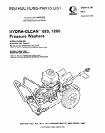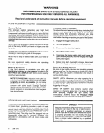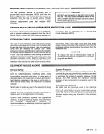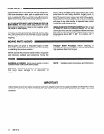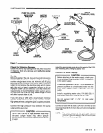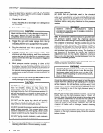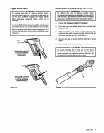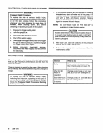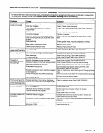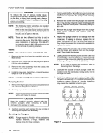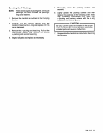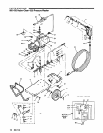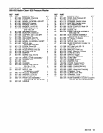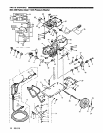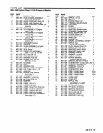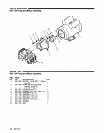
High pressure fluid in the hoses can be very dangerous.
If the hose develops a leak, split or rupture due to any
kind of wear, damage or misuse, the high pressure
spray emitted from it can cause a fluid injection injury or
other serious bodily injury or property damage.
ALL FLU/D HOSES MUST HAVE STRAIN RELEFS ON
BOTH ENDS. The strain reliefs help protect the hose
from kinks or bends at or close to the coupling, which
can result in hose rupture.
TlGHTEN all fluid connections securely before each
use. High pressure fluid can dislodge a loose coupling
or allow high pressure spray to be emitted from the
coupling.
NEVER use a damaged hose. Before each use, check
entire hose for cuts, leaks, abrasion, bulging cover, or
damage or movement of the hose couplings. If any of
these conditions exist, replace the hose immediately.
DO NO7 try to recouple high pressure hose or mend it
with tape or any other device. A repaired hose cannot
contain the high pressure fluid.
HANDLE AND ROUTEHOSES CAREFULLY
Do not pull
on hoses to move the pressure washer. Do not use
chemicals which are not compatible with the inner tube
and cover of the hose. DO NOT expose Grace hose to
temperatures above 200” F (93” C) or below -4W F
(-40” C).
Moving parts can pinch or amputate fingers or other
body parts. KEEP CLEAR of moving parts when starting
or operating the pressure washer.
NEVER operate the pressure washer without all guards
and interlocks installed and functioning. Follow the
Pressure Relief Procedure
before checking or
servicing the pressure washer to prevent discharging
high pressure fluid from the gun.
WARNING or DANGER:
Alerts user to avoid or correct
conditions that could cause bodily injury.
NOTE:
Identifies helpful procedures and information.
CAUTION:
Alerts user to avoid or correct conditions
that could cause damage to or destruction of
equipment.
IMPORTANT
United States Government safety standards have been adopted under the Occupational Safety and Health Act. These
standards -particularly the General Standards, Part 1910, and the Construction Standards, Pat-l 1926 -should be
consulted.
4
308-518



